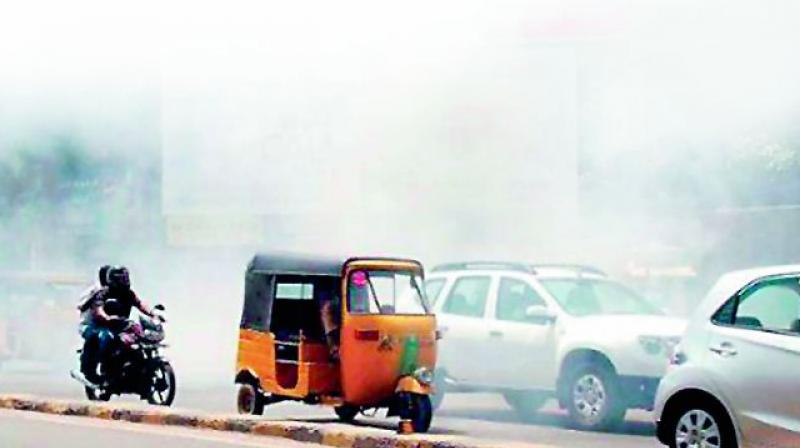Hyderabad: Pollution causes more storms
PM 10 and 2.5 which are on rise in summer responsible for formation of thick clouds.

Hyderabad: It is found that the minute particulate matter, gases and humidity dissolved in air pollution impacts the atmospheric pressure. It plays a major role in the growing intensity of dust and thunderstorms in the northern and southern India.
Air pollution in summer increases in most cities, and Hyderabad is no exception. In the first week of May, Particulate Matter (PM) 10 and 2.5 exceeded the standard limits, positioning the city in the high-risk category. PM is a mixture of solids and liquid droplets floating in the air. Particles less than or equal to 10 micrometers in diameter are small enough to get into the lungs directly and can cause serious health problems.
Mahesh Palawat, an expert on weather from Skymet explained that the role of PM 10 is observed for the gases that it carries and PM 2.5 the small particles in terms of chemicals and dust which along with the humidity are responsible for the formation of heavy clouds.
“These conditions are prevalent in the higher levels of the atmosphere and the wind movement. Pollution at the local level rises to the higher levels which will be 15,000 feet above sea level in the atmosphere and the wind carries it to other parts,” Mr Palawat said
The creation of thunderstorms is due to the atmospheric activity within a region where the greater concentration of the particles along with humidity and heat results in the formation of thunderstorms and dust storms. “It impacts the northern states in the form of dust storms and in the south as thunderstorms,” he said.
The increasing intensity of storms is due to the rising heat. Temperatures of 2ºC to 3ºC above normal levels are being recorded.
Models created by scientists to study the impact of air pollution have shown the significant role of PM 2.5 levels in triggering atmospheric changes.
An environmental engineer with Telangana State Pollution Control Board said, “PM 2.5 can be controlled but it requires co-operation from industries and that means added costs to manage the levels of pollution. This involves intervention in terms of technology, and other measures and also a strict adherence to rules. These factors can be achieved if the centre, state, industry and people come together on the same platform. But until then we will see the impact in terms of more extreme weather events.”

